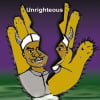Bhadrapad Krushna Dashmi Kaliyug Varsha 5112
New Delhi: "In our view, the conclusion drawn by the ASI in the project accomplished within an extra-ordinary brief period and with such an excellence precision and perfection deserve commendation and appreciation instead of condemnation." — Justice Sudhir Agarwal.
Though criticized by a section of historians, the Archaeological Survey of India’s 2003 excavation report has been critical in allowing the Allahabad high court in reaching a verdict that years of negotiations and entrenched politiking had not yielded.
The ASI view that evidence pointed to the existence of a temple, forms the key material evidence relied upon by the court. Perhaps keeping in mind the criticism of ASI’s findings, Justice Sudhir Agarwal and Justice D V Sharma in their comments have countered allegations of the report being influenced by powers that be.
They emphasized that the court controlled excavation was transparent. The charge that the finding of a huge structure preexisting the Babri Masjid, was "managed" has been addressed in detail. It had been alleged that the report was "biased and imagined" and failed to faithfully reproduce the actual findings.
But the judges have decisively recalled the facts of the case. While Justice Agarwal pointed out how representatives and lawyers of each party in the suit were permitted to shadow ASI officials during the actual excavations, Justice Sharma highlighted how "even Muslim members have also signed the report of ASI."
"The court has taken full care and issued specific directions to maintain transparency. Two judicial officers remained posted there. The excavation was conducted in the presence of the parties, lawyers and their nominees. Nobody can raise a finger about the propriety of the report on the ground of bias," Justice Sharma observed, rejecting pleas that the report be discarded.
The court said that the ASI report contains all the details including details of stratigraphy, artifacts, periodisation as well as details of structures and walls. The pillar bases mentioned in the report establishes beyond all doubt the existence of a huge structure.
In addition to above, existence of circular shrine, stone slabs in walls with Hindu motifs and more particularly sign of Makar Pranal in wall No. 5 (wall of disputed structure), divine couple and other temple materials, etc. conclusively proves the existence of a hindu religious structure, the judges have argued.
Another grievance related to ASI allegedly ignoring key evidence thrown up in the form of bones of animals found from the sites. This, it was argued, disproved that the structure below was a Hindu one since animals couldn’t have been killed there. But the judges countered by relying on a host of ancient literary Hindu texts sanctioning animal sacrifice.
"It is a well known fact that in certain Hindu temples animal sacrifices are made and flesh is eaten as Prasad while bones are deposited below the floor at the site itself," Justice Agarwal noted, upholding the ASI findings that a Nagara style northern Indian temple existed prior to the disputed structure.
HC was also surprised to note the "zeal" in some of the archaeologists and historians appearing as witnesses on behalf of the Sunni Waqf Board who made statements much beyond reliefs demanded by the Waqf.
Source: TOI
Also See
 |
Hindu Genocide in Kashmir & Bangladesh
Online photo exhibition of Hindu genocide and temples destruction in Kashmir by local Muslims. Series of exhibitions being arranged. |
 |
Grave sins of Congress are driving India to doom!
Highest sins of the Congress which is taking the country to Hell and of all political parties who are doing nothing about it but just letting that happen ! |




